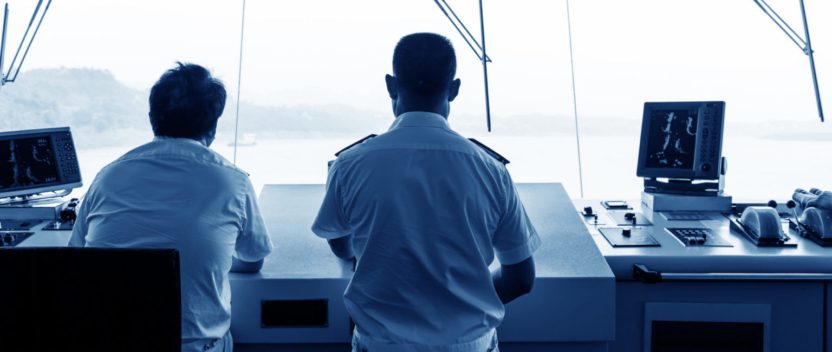GNS charts course beyond ECDIS compliance
Paul Stanley is a somewhat unconventional Chief Executive Officer, at least for one who leads a global distributor of navigation charts. Where one might expect him to be full of missionary zeal for the ECDIS mandate and ready to trade paper charts for digital, he is realistic on what shipping needs now and what it might want in the future.
It could be because Stanley is still only 100 days into the role at GNS – he quipped to the ShipServ Smart Procurement event that ‘nothing is my fault yet’. Or perhaps the industry is over the hump on ECDIS, given the extended timeline leading towards the crunch point in 2018.
He says much of the company’s activity is supporting shipping companies as they make the transition to digital charts and helping them ‘to see the opportunity beyond navigation’. He cheerfully admits that ‘paper charts will be around for a while’ and says a big part of what drives business is the high proportion of former mariners at GNS who know the process from the inside.
“People will still need paper as well as digital publications and we don’t expect the day to day business to change as much as might once have been envisaged. Our core business is global distribution and a 24×7 service, with the logistics that gets the products physically in right places delivered around our global network.”
Either way, the pie is growing. Of a SOLAS merchant fleet of around 55,000 vessels, some 35,000 are affected by ECDIS mandation. But add the offshore and leisure sectors and he says the numbers are much higher. “People are voluntarily coming to the technology because they can see the convenience and technology advantages. There’s a business case for doing this aside from complying with mandation.”
But he is unconvinced that mandation is by itself driving higher standards, given that the regulations only define a minimum level of compliance, resulting in a proliferation of interfaces and operating systems.
Rather, he sees a need for the continuation of the collaboration in chart production that has begun in the last few years. “We can see from other industries that compliance drives innovation and the other key is participation and collaboration. But that shouldn’t be in trying to define technology standards, because you will only get to a minimum acceptable level.”
“Hydrographic Offices have had to collaborate to get more ENCs to market,” he explains. “A few years ago, the UKHO was responsible for 75% of chart production but that’s simply not the case anymore.”
While compliance and inventory management are important, the next phase for shipping he believes is to use the channels that digital navigation and broadband communications have opened up, to build a hub that can be used to move more data on and off the vessel.
“The future goes way beyond charts and navigation to create a shared view of what is taking place on a vessel. We can do much more than navigation, linking the front and back of bridge to ports and fleet managers, vendors and suppliers,” he says.
There is an obvious community of stakeholders interested in this data but Stanley sees another that puts GNS alongside the collectors and aggregators that are of such interest to owners, flags, class and regulators. Where a vessel has been and where it’s going is, he suggests, of interest to anyone studying the flow of goods and services. The ‘third leg’ is enhancing the technology capability to connect to a much broader ecosystem.
“The data business is not our core function but it makes sense if it allows others to consume relevant data. An industry-wide view on engine performance, aggregated for anonymity for example, or shipping companies that want to enter into benchmark studies are legitimate purposes for consuming that data.”
So has the business of selling ENCS become the low margin, low tech end of the business? Certainly not low tech he says, given the growth in value-added overlays, both for navigation and in related data such as weather and security information.
“The margin depends on how and where a customer buys from us. We have a Coca-Cola mentality: the same products and the same quality, whatever the location, with different delivery conditions.”
Ends


